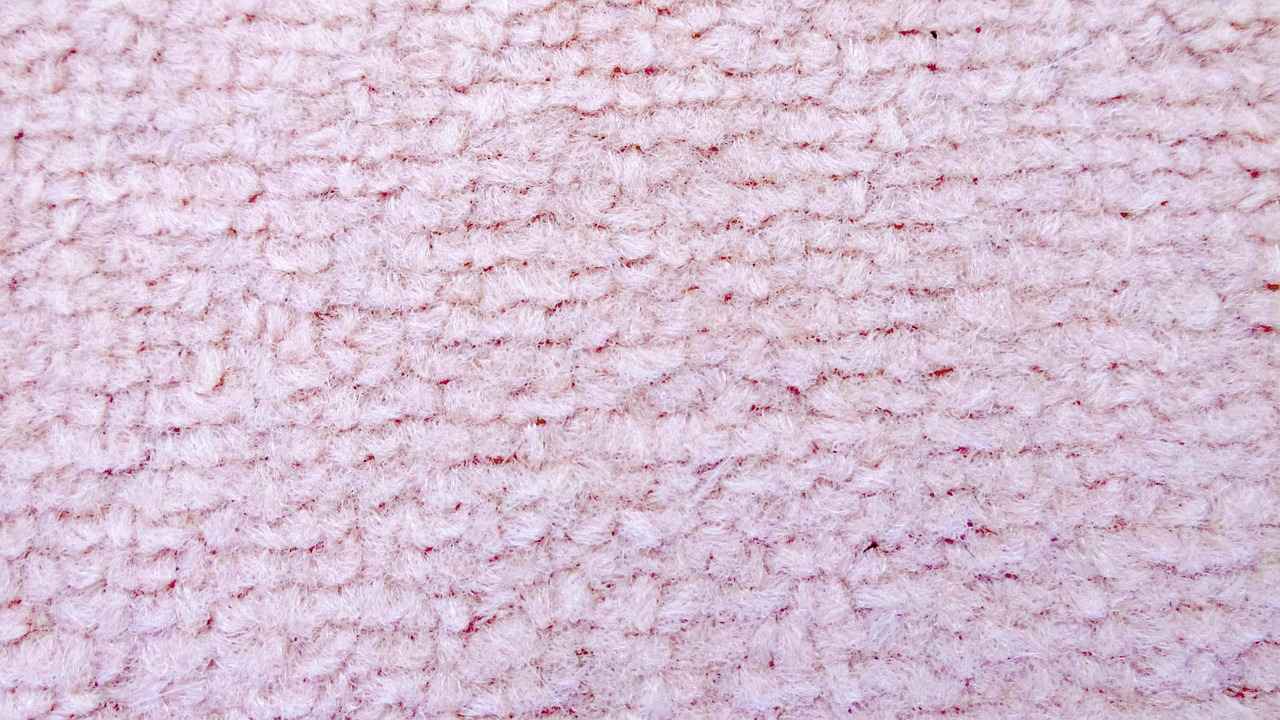This article serves as a comprehensive guide to selecting the perfect fabric for custom t-shirts. Choosing the right material is essential, as it affects not only the aesthetic appeal but also the comfort, durability, and print quality of your t-shirts. By understanding the various types of fabrics available, you can make an informed decision that aligns with your specific needs and preferences.
Understanding Fabric Types
Different fabric types offer unique benefits. Recognizing these variations is crucial for making informed choices for custom t-shirts. Below are some popular fabric choices:
- Cotton: Known for its softness and breathability, cotton remains a top choice among consumers.
- Polyester: This fabric is celebrated for its durability and moisture-wicking properties, making it ideal for activewear.
- Blends: Combining different materials can enhance comfort and performance.
Cotton: The Classic Choice
Cotton is favored for its excellent comfort and moisture absorption. It is also hypoallergenic, making it suitable for various skin types. However, it can shrink and wrinkle easily, which may not be ideal for all designs.
Polyester: The Performance Fabric
Polyester is known for its long-lasting durability and ability to wick moisture away from the body. This makes it a fantastic option for custom t-shirts designed for sports and outdoor activities.
Fabric Blends: The Best of Both Worlds
Blending fabrics can offer the best attributes of each material. For instance:
- Cotton-Polyester Blends: These provide the softness of cotton with the durability of polyester.
- Tri-Blend Fabrics: Typically made from cotton, polyester, and rayon, tri-blends offer a unique texture and exceptional comfort.
Choosing the Right Fabric Weight
The weight of the fabric significantly impacts the look and feel of your t-shirt. Lightweight fabrics are perfect for casual wear, while heavyweight options provide structure and durability for more formal styles.
Assessing Fabric Durability
Durability is critical for custom t-shirts, especially if they will be worn frequently. Consider how different fabrics hold up over time and under various conditions, including their washability and resistance to pilling and fading.
Impact of Fabric on Print Quality
The choice of fabric can greatly affect the print quality of your custom t-shirts. Different printing methods, such as screen printing and direct-to-garment, work better with specific fabrics. For vibrant and lasting sublimation prints, certain fabric types are essential.
Final Considerations for Fabric Selection
When selecting fabric for custom t-shirts, consider factors like cost, availability, and eco-friendliness. Making informed decisions will ensure that you are satisfied with the final product.

Understanding Fabric Types
When it comes to custom t-shirts, the fabric type you choose plays a crucial role in defining the overall quality, comfort, and style of the garment. Different fabric types offer unique benefits that cater to various preferences and needs. Understanding these variations is essential for making informed decisions that align with your specific requirements.
Each fabric type comes with its own set of characteristics that can enhance or detract from your custom t-shirt experience. For instance, some fabrics are better suited for breathability, while others excel in durability or print quality. By familiarizing yourself with these differences, you can select a fabric that not only meets your aesthetic desires but also provides practical benefits.
Here are some common fabric types to consider:
- Cotton: Renowned for its softness and comfort, cotton is a classic choice that offers excellent breathability. It is ideal for casual wear and is gentle on the skin.
- Polyester: This synthetic fabric is known for its durability and moisture-wicking properties, making it perfect for activewear and performance-oriented designs.
- Blends: Fabrics that combine cotton and polyester or other materials can provide the best of both worlds, offering comfort along with enhanced durability and reduced wrinkling.
- Rayon: Often used in tri-blend fabrics, rayon offers a luxurious feel and drapes beautifully, making it a trendy choice for stylish t-shirts.
Understanding the properties of these fabrics—such as their weight, texture, and care requirements—will allow you to choose wisely. For example, lightweight fabrics are perfect for hot weather, while heavier options provide structure and warmth for cooler conditions.
In summary, recognizing the unique benefits of different fabric types is essential for creating custom t-shirts that not only look great but also meet your functional needs. By taking the time to explore these options, you can ensure that your final product is tailored to your specific preferences and lifestyle.

Popular Fabric Choices for T-Shirts
When it comes to custom t-shirts, the choice of fabric plays a crucial role in determining the overall quality, comfort, and appeal of the final product. Below, we explore the most commonly used fabrics, each with its own unique characteristics and advantages, helping you make an informed decision for your custom apparel needs.
- Cotton: Known as the classic choice, cotton is favored for its softness and breathability. It is ideal for casual wear and is gentle on the skin, making it a popular option for everyday t-shirts.
- Polyester: This fabric is renowned for its durability and moisture-wicking properties, making it a top pick for activewear. Polyester t-shirts are less prone to shrinking and wrinkling, which enhances their longevity.
- Cotton-Polyester Blends: By combining the best features of cotton and polyester, these blends offer the soft feel of cotton with the strength of polyester. This versatility makes them suitable for various custom designs.
- Tri-Blend Fabrics: Typically made from a mix of cotton, polyester, and rayon, tri-blends provide a unique texture and exceptional comfort. They are perfect for trendy designs that require a stylish look and feel.
Each fabric type comes with distinct benefits that cater to different preferences and needs. For instance, while cotton is excellent for breathability, polyester excels in moisture management, making it more suitable for sports and outdoor activities. Blends, on the other hand, strike a balance, offering both comfort and durability.
In conclusion, understanding the characteristics of these popular fabric choices is essential for creating custom t-shirts that not only look great but also feel comfortable and last longer. Whether you prioritize softness, durability, or a blend of both, the right fabric can significantly enhance your custom apparel experience.
Cotton: The Classic Choice
Cotton has long been recognized as a premier fabric choice for custom t-shirts, and it’s easy to see why. Its natural properties make it a beloved option among consumers seeking comfort and style. In this section, we will explore the various qualities of cotton that contribute to its status as a top fabric choice for custom apparel.
- Softness: One of the most appealing features of cotton is its incredible softness. This makes it gentle against the skin, providing a comfortable wearing experience that is ideal for everyday use.
- Breathability: Cotton is highly breathable, allowing air to circulate and helping to regulate body temperature. This is particularly beneficial in warmer climates or during physical activities.
- Moisture Absorption: Cotton can absorb moisture effectively, which means it can wick sweat away from the body, keeping the wearer dry and comfortable.
- Hypoallergenic: For individuals with sensitive skin, cotton is a safe choice as it is less likely to cause allergic reactions or irritations compared to synthetic fabrics.
Despite its many advantages, there are some drawbacks to consider when choosing cotton for custom t-shirts:
- Shrinkage: Cotton fabrics can shrink when washed, especially if not pre-shrunk. This is an important factor to consider for maintaining the fit of custom t-shirts.
- Wrinkling: Cotton is prone to wrinkling, which may require regular ironing or steaming to keep t-shirts looking crisp and neat.
In conclusion, cotton remains a classic choice for custom t-shirts due to its numerous benefits, including softness, breathability, and hypoallergenic properties. While it does have some drawbacks, the overall comfort and versatility of cotton make it a favored option among consumers and designers alike.
Benefits of Cotton Fabric
Cotton is celebrated as one of the most versatile fabrics available, particularly in the realm of custom t-shirts. Its popularity stems from a combination of comfort, functionality, and skin-friendly properties. Below are several key benefits that make cotton an ideal choice for various applications:
- Exceptional Comfort: Cotton is renowned for its softness and breathability. This fabric allows air to circulate, keeping the wearer cool and comfortable, especially in warm climates.
- Moisture Absorption: One of cotton’s standout features is its ability to absorb moisture. This means it can wick sweat away from the skin, making it ideal for both casual wear and athletic activities.
- Hypoallergenic Properties: Cotton is naturally hypoallergenic, which means it is less likely to cause allergic reactions. This makes it a safe choice for individuals with sensitive skin or allergies.
- Durability: While cotton is soft, it is also quite durable. With proper care, cotton t-shirts can withstand multiple washes without losing their shape or color.
- Eco-Friendly: Cotton is a natural fiber, and when sourced responsibly, it can be an eco-friendly choice. Organic cotton options are available for those looking to minimize their environmental impact.
- Versatile for All Seasons: Cotton’s breathable nature makes it suitable for both hot and cool weather. It can be layered with other fabrics, making it a year-round wardrobe staple.
In conclusion, the multitude of benefits offered by cotton fabric makes it a top contender for anyone looking to create custom t-shirts. Whether prioritizing comfort, durability, or skin-friendliness, cotton stands out as a reliable choice.
Drawbacks of Cotton Fabric
While cotton is often hailed as the go-to fabric for custom t-shirts due to its numerous advantages, it is essential to consider some significant drawbacks that may impact its suitability for various designs and styles.
- Shrinking Issues: One of the primary concerns with cotton fabric is its tendency to shrink after washing. This can lead to sizing problems, particularly if the t-shirt is not pre-shrunk before printing. Consumers may find that their custom t-shirts fit differently after the first wash, which can be disappointing.
- Wrinkling: Cotton is also prone to wrinkling, making it less ideal for styles that require a crisp appearance. This characteristic can be problematic for designs that are meant to look polished and professional, as wrinkles can detract from the overall aesthetic.
- Color Fading: Although cotton takes dye well, it can also be susceptible to fading over time, especially when exposed to sunlight and frequent washing. This fading can diminish the vibrancy of printed designs, making the t-shirt look worn out more quickly.
- Limited Moisture-Wicking: Unlike synthetic fabrics, cotton does not wick moisture away from the body effectively. This can lead to discomfort during physical activities, as sweat may linger on the fabric, making it feel heavy and damp.
- Environmental Concerns: The production of cotton can have significant environmental impacts, including high water usage and pesticide application. For eco-conscious consumers, this may be a critical factor when choosing fabric for custom t-shirts.
In summary, while cotton remains a popular choice for its comfort and breathability, potential issues such as shrinkage, wrinkling, and fading should be carefully considered. Understanding these drawbacks can help consumers make informed decisions when selecting fabric for their custom t-shirt designs.
Polyester: The Performance Fabric
Polyester has emerged as a leading choice in the world of fabric, particularly for activewear and custom t-shirts aimed at performance. This synthetic material is renowned for its durability and moisture-wicking properties, making it an ideal option for those who lead an active lifestyle.
One of the standout features of polyester is its ability to wick moisture away from the body. This characteristic helps keep the wearer dry and comfortable during intense physical activities, making it a popular choice for athletes and fitness enthusiasts. Unlike natural fibers, polyester does not absorb moisture; instead, it allows sweat to evaporate quickly, which can enhance overall performance.
In addition to its moisture management capabilities, polyester is also incredibly durable. It withstands wear and tear much better than many natural fabrics, making it less prone to fading, shrinking, or stretching. This resilience means that polyester garments can maintain their shape and color even after numerous washes, which is especially important for custom t-shirts that are frequently worn.
Moreover, polyester is often blended with other fabrics to combine the best qualities of each material. For example, a cotton-polyester blend offers the breathability of cotton along with the durability of polyester, resulting in a fabric that is both comfortable and long-lasting. This versatility makes it suitable for a wide range of applications, from casual wear to high-performance athletic gear.
When considering custom t-shirts, polyester’s quick-drying nature and resistance to wrinkles also make it a practical choice for promotional events or team uniforms. By choosing polyester, businesses can ensure that their branding remains sharp and professional-looking, even in demanding conditions.
In conclusion, polyester stands out as a performance fabric that caters to the needs of active individuals. Its moisture-wicking properties, durability, and versatility make it an excellent choice for custom t-shirts designed for performance. Whether for sports, leisure, or promotional purposes, polyester is a fabric that continues to deliver.

Fabric Blends: The Best of Both Worlds
Fabric blends are an innovative solution in the textile industry, combining the strengths of different materials to create fabrics that enhance performance, comfort, and durability. By merging the unique properties of various fibers, manufacturers can produce t-shirts that meet diverse consumer needs and preferences.
One of the most popular fabric blends for custom t-shirts is the cotton-polyester blend. This combination offers the softness and breathability of cotton while incorporating the durability and wrinkle resistance of polyester. As a result, these t-shirts are not only comfortable to wear but also maintain their shape and appearance over time, making them ideal for everyday use.
Another noteworthy option is tri-blend fabrics, which typically consist of cotton, polyester, and rayon. This blend provides a unique texture that feels soft against the skin while offering excellent drape and stretch. Tri-blend t-shirts are particularly popular for fashion-forward designs, as they combine style with comfort, making them perfect for casual outings or promotional events.
| Fabric Blend | Advantages | Ideal Uses |
|---|---|---|
| Cotton-Polyester | Soft, durable, wrinkle-resistant | Everyday wear, casual tees |
| Tri-Blend | Soft texture, great drape, comfortable | Fashion tees, promotional events |
Choosing the right fabric blend for custom t-shirts not only enhances the overall aesthetic but also ensures that the garments perform well in various conditions. When selecting a fabric, consider factors such as print quality, durability, and care instructions. For instance, certain blends may be better suited for specific printing techniques, ensuring that your designs look vibrant and last longer.
In conclusion, fabric blends represent the best of both worlds, combining the desirable traits of various fibers to create versatile and appealing custom t-shirts. By understanding the benefits of these blends, you can make informed choices that align with your style and functional needs, ultimately leading to greater satisfaction with your custom apparel.
Cotton-Polyester Blends
are increasingly popular in the world of custom t-shirts, offering a combination of comfort and durability that appeals to a broad audience. This blend merges the softness of cotton with the strength of polyester, resulting in a fabric that is not only comfortable to wear but also resilient enough to withstand the rigors of daily use.
One of the primary advantages of is their breathability. Cotton fibers allow air to circulate, keeping the wearer cool and comfortable, while polyester adds moisture-wicking properties, drawing sweat away from the body. This makes these blends an excellent choice for both casual wear and more active environments.
Moreover, cotton-polyester blends are known for their easy maintenance. Unlike 100% cotton fabrics, which can shrink and wrinkle easily, these blends are typically more resistant to fading and pilling. This means that custom t-shirts made from this fabric can maintain their vibrant colors and crisp appearance even after multiple washes.
- Versatility: Suitable for various styles and designs.
- Cost-Effectiveness: Generally more affordable than pure cotton.
- Durability: Holds up well over time, making it ideal for frequent wear.
In addition to their practical benefits, cotton-polyester blends also offer a wide range of design possibilities. The fabric readily accepts various printing techniques, ensuring that your custom designs look sharp and vibrant. Whether you are considering screen printing or direct-to-garment methods, this blend provides a solid foundation for high-quality prints.
In conclusion, if you are looking for a fabric that combines comfort, durability, and versatility, should be at the top of your list. They not only meet the demands of everyday wear but also provide an excellent canvas for your custom t-shirt designs.
Tri-Blend Fabrics
are increasingly popular in the world of custom t-shirts, known for their unique blend of materials that create a soft, comfortable, and stylish garment. Typically composed of cotton, polyester, and rayon, these fabrics offer a variety of benefits that make them an excellent choice for anyone looking to create trendy apparel.
One of the standout features of tri-blend fabrics is their exceptional texture. The combination of these three materials results in a fabric that feels luxurious against the skin, making it ideal for everyday wear. The cotton provides breathability, the polyester adds durability, and the rayon contributes to a lightweight feel that drapes beautifully.
In addition to their comfortable feel, tri-blend fabrics also excel in moisture-wicking properties. This means that they can effectively pull sweat away from the body, keeping the wearer cool and dry, which is particularly beneficial during physical activities. This makes tri-blend t-shirts a popular choice for both casual and activewear.
Moreover, tri-blend fabrics are known for their vibrant color retention. The polyester component helps the fabric maintain its color over time, resisting fading even after multiple washes. This is crucial for custom designs that incorporate bold graphics or intricate patterns, ensuring that the artwork remains striking and fresh.
When it comes to print quality, tri-blend fabrics offer a smooth surface that works exceptionally well with various printing techniques. Whether you opt for screen printing or direct-to-garment methods, these fabrics deliver crisp and clear designs that stand out.
In conclusion, tri-blend fabrics are an excellent choice for custom t-shirts due to their unique blend of comfort, durability, and print quality. Whether you’re designing for a special event, a sports team, or simply for personal use, tri-blends provide a fashionable and functional option that is sure to impress.

Choosing the Right Fabric Weight
When it comes to custom t-shirts, fabric weight plays a crucial role in determining the overall look and feel of the garment. The weight of the fabric not only affects comfort but also influences the drape, durability, and suitability for various designs. Understanding how to choose the right weight is essential for achieving the desired outcome for your custom creations.
Understanding Fabric Weight
Fabric weight is typically measured in grams per square meter (GSM). A higher GSM indicates a heavier fabric, while a lower GSM signifies a lighter one. Here’s a breakdown of common fabric weights:
| Fabric Weight (GSM) | Description | Best Uses |
|---|---|---|
| 100-150 GSM | Lightweight | Summer wear, casual t-shirts |
| 150-200 GSM | Medium weight | Everyday t-shirts, layering |
| 200+ GSM | Heavyweight | Durable t-shirts, outerwear |
Lightweight Fabrics
Lightweight fabrics (100-150 GSM) are perfect for warm weather and casual settings. They offer breathability and comfort, making them ideal for summer t-shirts or active wear. However, they may lack the structure needed for more formal designs.
Medium Weight Fabrics
Medium weight fabrics (150-200 GSM) strike a balance between comfort and durability. They are versatile enough for various styles, making them a popular choice for everyday wear. This weight is also suitable for printing, as it holds designs well without compromising on comfort.
Heavyweight Fabrics
Heavyweight fabrics (200+ GSM) are known for their durability and structure. They are ideal for t-shirts that require a more polished look or for colder climates. However, they may not be as breathable as their lighter counterparts, which is something to consider based on the intended use.
Conclusion
Choosing the right fabric weight for your custom t-shirts is essential for achieving the desired look and feel. By understanding the differences between lightweight, medium weight, and heavyweight fabrics, you can make informed decisions that align with your design goals and customer preferences. Always consider the end use of the t-shirt to ensure satisfaction with the final product.
Lightweight vs. Heavyweight Fabrics
When it comes to choosing the right fabric for custom t-shirts, understanding the differences between lightweight and heavyweight fabrics is essential. Each type offers unique benefits that cater to various needs and preferences.
Lightweight Fabrics
- Ideal for Casual Wear: Lightweight fabrics, such as cotton and rayon, are perfect for relaxed, everyday outfits. They allow for ample airflow, making them comfortable to wear in hot climates.
- Breathability: These fabrics are designed to wick away moisture, keeping the wearer cool and dry, which is particularly beneficial during outdoor activities or warm weather.
- Variety of Styles: Lightweight options are versatile and can be used for various t-shirt styles, from casual tees to trendy fashion statements.
Heavyweight Fabrics
- Durability: Heavyweight fabrics, such as thicker cotton or blends, provide enhanced durability, making them suitable for t-shirts that withstand frequent wear and washing.
- Structure and Fit: These fabrics offer more structure, which can enhance the fit and overall appearance of formal or semi-formal t-shirt designs.
- Warmth: Heavyweight options are ideal for cooler climates, providing extra warmth and comfort during colder months.
Choosing between lightweight and heavyweight fabrics depends on personal style, climate, and intended use. For casual, everyday wear in hot weather, lightweight fabrics are the go-to choice. However, for those seeking durability and a more structured look, heavyweight fabrics are the better option. Ultimately, understanding these differences will help you make an informed decision when selecting the perfect fabric for your custom t-shirts.
Understanding Fabric GSM
When it comes to choosing the right fabric for your custom t-shirts, one of the most critical factors to consider is GSM, which stands for grams per square meter. This measurement provides insight into the density of the fabric, significantly impacting the overall quality, feel, and durability of the t-shirt.
The GSM value can vary widely among different fabric types. For instance, a fabric with a low GSM (around 120-160) is typically lightweight and suitable for warmer climates, making it ideal for casual wear. On the other hand, a higher GSM (above 200) indicates a thicker, more substantial fabric that offers greater durability and structure, perfect for more formal or heavy-duty t-shirt designs.
- Low GSM Fabrics: Lightweight and breathable, these fabrics are great for summer wear.
- Medium GSM Fabrics: Versatile for various styles, providing a balance between comfort and durability.
- High GSM Fabrics: Suitable for colder weather or more robust designs, offering longevity and a premium feel.
It’s important to note that GSM also affects how the fabric interacts with printing techniques. For example, lower GSM fabrics may absorb ink differently compared to their heavier counterparts, potentially impacting the vibrancy and longevity of prints.
In summary, understanding fabric GSM is essential for making informed decisions when selecting materials for custom t-shirts. By considering the GSM alongside other attributes like fabric type and intended use, you can ensure that your final product meets your expectations in terms of comfort, durability, and aesthetic appeal.

Assessing Fabric Durability
When it comes to custom t-shirts, durability is a vital factor, especially for those who wear them frequently. The fabric choice can significantly impact how well a t-shirt withstands the rigors of daily use, including washing, wearing, and exposure to various environmental conditions.
Different fabrics exhibit varying levels of durability. For instance, cotton is renowned for its comfort but can be prone to wear and tear over time, particularly if not cared for properly. On the other hand, polyester is celebrated for its resilience; it can endure numerous washes without losing shape or color.
Here are some key aspects to consider when evaluating fabric durability:
- Washability: Fabrics that are easy to wash and maintain tend to last longer. Always check the care instructions to ensure longevity.
- Resistance to Pilling: Fabrics like polyester are less likely to pill compared to natural fibers, which can enhance the appearance of your t-shirt over time.
- Fading Resistance: Some materials hold their color better than others. For example, synthetic fabrics often resist fading more effectively than cotton.
To illustrate the differences in durability, consider the following table:
| Fabric Type | Durability Rating | Care Requirements |
|---|---|---|
| Cotton | Moderate | Machine wash; may shrink |
| Polyester | High | Machine wash; quick-drying |
| Cotton-Polyester Blend | High | Machine wash; minimal shrinkage |
In conclusion, choosing the right fabric for your custom t-shirts can greatly influence their durability. By understanding the characteristics of different materials, you can make informed decisions that ensure your t-shirts not only look great but also stand the test of time.
Washability and Care Instructions
are essential aspects to consider when selecting fabrics for custom t-shirts. Understanding how to properly care for different materials ensures that your t-shirts maintain their quality, appearance, and longevity over time. Here, we delve into the washability of various fabrics and provide practical care instructions to help you keep your custom t-shirts looking their best.
- Cotton: Cotton is known for its softness and comfort. To maintain its quality, wash cotton t-shirts in cold water to prevent shrinking and fading. Avoid using bleach, and tumble dry on low heat to minimize wrinkles.
- Polyester: This synthetic fabric is durable and resistant to shrinking. For polyester t-shirts, machine wash in warm water and tumble dry on medium heat. To avoid static cling, consider using a fabric softener.
- Cotton-Polyester Blends: These blends combine the benefits of both materials. Follow the care instructions for polyester, as they are generally more forgiving. Washing in cold water and tumble drying on low will keep these shirts in great shape.
- Tri-Blend Fabrics: Tri-blends offer a unique texture and comfort. Hand washing is recommended to preserve their softness, but if machine washing, use cold water and hang to dry to avoid shrinking.
In addition to proper washing techniques, consider the following tips for maintaining your custom t-shirts:
- Storing: Store t-shirts in a cool, dry place to prevent moisture buildup, which can lead to mildew.
- Ironing: If ironing is necessary, use a low heat setting and place a cloth between the iron and the fabric to avoid damage.
- Stain Treatment: Treat stains promptly with a gentle stain remover, following the manufacturer’s instructions.
By understanding the washability and care instructions for different fabrics, you can ensure that your custom t-shirts remain vibrant and comfortable for years to come.
Resistance to Pilling and Fading
is a critical factor to consider when selecting fabrics for custom t-shirts. This section delves into the characteristics of various materials that enhance their durability and maintain their appearance over time.
When it comes to custom t-shirts, pilling refers to the formation of small balls of fiber on the fabric’s surface, which can detract from the garment’s aesthetic appeal. Similarly, fading occurs when colors lose their vibrancy due to exposure to sunlight, washing, or general wear and tear. Therefore, choosing the right fabric can significantly prolong the life of your t-shirt.
| Fabric Type | Resistance to Pilling | Resistance to Fading | Notes |
|---|---|---|---|
| Cotton | Moderate | Low | Prone to fading; best for short-term use. |
| Polyester | High | High | Excellent for activewear; retains color well. |
| Cotton-Polyester Blend | Moderate to High | Moderate | Combines comfort with durability. |
| Tri-Blend | High | High | Soft texture with good resistance to fading. |
Among the various options, polyester stands out due to its high resistance to both pilling and fading, making it an ideal choice for t-shirts that are frequently worn or washed. In contrast, while cotton offers unmatched comfort, it tends to fade and pill more easily, which may not be suitable for long-term use.
For those seeking a balance between comfort and durability, cotton-polyester blends and tri-blend fabrics are excellent choices. These materials offer the softness of cotton while incorporating the durability of synthetic fibers, ensuring that your custom t-shirts maintain their look and feel over time.
In conclusion, when selecting fabrics for custom t-shirts, it is essential to consider their resistance to pilling and fading. By choosing the right material, you can ensure that your t-shirts remain vibrant and comfortable, providing lasting value.

Impact of Fabric on Print Quality
The choice of fabric plays a crucial role in determining the print quality of custom t-shirts. When creating custom apparel, understanding how different materials interact with various printing techniques is essential for achieving the desired results. This section delves into the impact of fabric selection on print quality, ensuring you make informed choices for your custom t-shirt designs.
Different printing methods respond uniquely to various fabric types. Choosing the right fabric not only enhances the visual appeal of the print but also affects its longevity and durability. Below are some key insights into how fabric influences print quality:
- Cotton Fabrics: Cotton is highly absorbent, making it an excellent choice for screen printing. The fibers hold ink well, resulting in vibrant colors and sharp details. However, it may not be ideal for all printing techniques.
- Polyester Fabrics: Polyester is known for its smooth surface, which is perfect for dye-sublimation printing. This method allows for full-color prints that penetrate the fabric, ensuring the design remains vivid even after multiple washes.
- Blended Fabrics: Cotton-polyester blends offer a balance between comfort and durability. They work well with both screen printing and direct-to-garment (DTG) printing, making them versatile for various designs.
When deciding on fabric for your custom t-shirts, consider the following:
1. **Screen Printing**: Best on cotton and cotton blends for vibrant colors.2. **Direct-to-Garment (DTG)**: Works well on 100% cotton for detailed designs.3. **Sublimation Printing**: Requires polyester or polyester blends for optimal results.
In conclusion, the fabric you choose for custom t-shirts significantly impacts the print quality. By understanding the interaction between fabric types and printing methods, you can achieve stunning results that meet your design expectations. Always consider the specific needs of your project to ensure the best outcome.
Screen Printing vs. Direct-to-Garment
When it comes to creating custom t-shirts, understanding the nuances of different printing methods is crucial. Screen printing and direct-to-garment (DTG) printing are two popular techniques, each with its own strengths and weaknesses. Knowing which fabrics work best with these methods can significantly impact the final product’s quality and longevity.
Screen printing involves pushing ink through a mesh screen to create designs. This method is particularly effective on fabrics that are thicker and have a more textured surface. The following fabrics are ideal for screen printing:
- Cotton: A classic choice, cotton absorbs ink well and provides vibrant colors.
- Polyester: While traditionally less popular, advancements in inks have made polyester a viable option for screen printing.
- Blends: Cotton-polyester blends combine the benefits of both materials, allowing for durability and color retention.
DTG printing, on the other hand, works similarly to an inkjet printer, applying ink directly onto the fabric. This method is best suited for:
- 100% Cotton: The most recommended fabric for DTG, as it allows for excellent ink absorption and color vibrancy.
- Tri-Blends: These fabrics, which include cotton, polyester, and rayon, can also yield beautiful prints, although they may require special inks.
- Lightweight Fabrics: Lightweight materials can work well with DTG, providing a soft feel and vibrant prints.
Ultimately, the choice between screen printing and direct-to-garment printing will depend on your design, fabric choice, and intended use. For bulk orders with simple designs, screen printing is often more cost-effective. However, for intricate designs or smaller orders, DTG offers unmatched detail and color accuracy.
In conclusion, understanding the compatibility of fabrics with different printing methods can enhance your custom t-shirt projects. By selecting the right fabric, you ensure not only a visually appealing product but also one that stands the test of time.
Choosing Fabric for Sublimation Printing
Sublimation printing is a unique process that allows for vibrant and detailed designs to be transferred onto fabric. However, to achieve optimal results, it is crucial to select the right type of fabric. This guide will explore the best fabric options for sublimation printing, ensuring your prints are not only eye-catching but also long-lasting.
The sublimation process involves turning solid dye into gas without passing through a liquid state. This gas then permeates the fabric, creating a permanent bond. Therefore, the choice of fabric is essential for achieving vivid colors and high-resolution prints.
- Polyester: This is the most popular choice for sublimation printing. Polyester fibers allow dye to bond effectively, resulting in bright and durable prints. Look for fabrics with at least 65% polyester content for the best results.
- Polyester Blends: Blends of polyester with other materials, such as cotton, can also work well. While pure polyester is preferred, blends can offer a softer feel while still retaining print quality.
- Specialty Fabrics: Fabrics specifically designed for sublimation, such as moisture-wicking athletic wear, can enhance performance and comfort, making them ideal for sports apparel.
The weight of the fabric plays a significant role in the final appearance of your sublimation prints. Lightweight fabrics are great for casual wear, while heavier fabrics provide more durability. Consider the GSM (grams per square meter) of the fabric to ensure it meets your needs.
Choosing the right fabric for sublimation printing is essential for achieving vibrant, long-lasting prints. Polyester and its blends are the best choices, providing the necessary properties for the sublimation process. Always consider fabric weight and composition to ensure your designs look their best.

Final Considerations for Fabric Selection
When embarking on the journey of creating custom t-shirts, it is essential to make informed decisions regarding fabric selection. While factors such as cost, availability, and eco-friendliness are paramount, there are additional aspects that can significantly influence your satisfaction with the final product.
- Cost: The price of fabric can vary widely based on the material and quality. It’s important to establish a budget before selecting your fabric. High-quality materials may cost more upfront but can provide better durability and comfort, ultimately saving money in the long run.
- Availability: Ensure that the fabric you choose is readily available from suppliers. Limited availability can lead to delays in production and may affect your overall timeline.
- Eco-Friendliness: In today’s market, consumers are increasingly aware of the environmental impact of their purchases. Opting for organic or recycled materials can not only enhance your brand image but also appeal to environmentally-conscious customers.
- Comfort: The feel of the fabric against the skin is a critical factor. Fabrics that are soft and breathable will enhance the wearer’s experience, making them more likely to wear your t-shirts regularly.
- Durability: Consider how the fabric will hold up over time, especially after multiple washes. Fabrics that resist fading, pilling, and shrinkage will ensure your custom t-shirts maintain their appearance and fit.
- Print Quality: Different fabrics interact uniquely with printing techniques. It’s crucial to choose a fabric that will deliver the best results for your chosen printing method, whether it’s screen printing, direct-to-garment, or sublimation.
In conclusion, when selecting fabric for custom t-shirts, it is vital to weigh all these factors carefully. By doing so, you will not only ensure that your t-shirts meet your expectations but also create a product that resonates with your target audience, enhancing overall satisfaction.
Frequently Asked Questions
- What is the best fabric for custom t-shirts?
The best fabric really depends on your needs! If you want something soft and breathable, cotton is a classic choice. For durability and performance, polyester is fantastic, especially for activewear. Blends, like cotton-polyester, combine the best of both worlds, making them versatile and comfortable.
- How do I choose the right fabric weight?
Choosing the right fabric weight is all about the look and feel you want. Lightweight fabrics are great for hot weather and casual styles, while heavyweight fabrics offer structure and durability for more formal designs. Think about when and where you’ll wear the t-shirt!
- Can I print on any fabric?
Not all fabrics are created equal when it comes to printing. For example, screen printing works best on cotton, while sublimation printing requires polyester for vibrant results. Always check which fabric suits the printing method you plan to use!
- How do I care for my custom t-shirts?
Caring for your t-shirts is key to keeping them looking fresh! Always check the care label, but generally, washing in cold water and air drying can help maintain fabric quality. Avoid harsh detergents that can fade colors or cause pilling.












